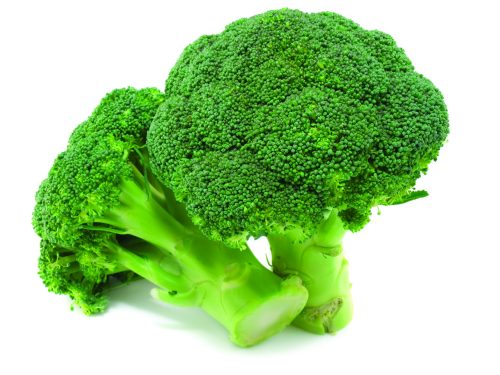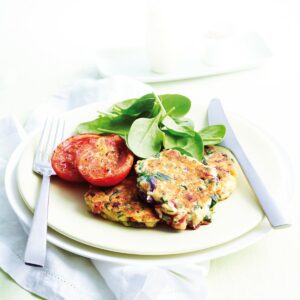
The low-down
Buying: Broccoli is a member of the cabbage family, and it comes in a variety of colours such as dark green and purplish-green. Buy broccoli with bright green leaves and firm, thin stalks. Limp stalks are a sign of poor quality and woody stems a sign of over-maturity. The florets should be compact and tightly closed. Avoid florets with yellowing heads (a sign of age), wilting, or water-soaked spots (a sign of decay).
Storing: Store broccoli in the fridge in a plastic bag for up to three to four days. Cover and refrigerate cooked broccoli. Alternatively, freeze broccoli: wash broccoli thoroughly before cooking, then blanch in boiling water for three minutes or steam for five minutes. Cut in sizeable florets and stalks in pieces. Wait for broccoli to cool completely before placing in containers or plastic bags. You can freeze broccoli for at least six months.
Preparation: Dunk tired looking broccoli in cold water. Trim broccoli in florets when serving raw with dip or in salads. When ready to cook, wash thoroughly. Cook broccoli ideally by steaming for about five minutes over boiled water until bright green and tender. Be careful not to overcook or broccoli will lose nutrients. Alternatively, briefly boil broccoli, stir-fry, or bake in casseroles.
Nutrition: Broccoli is packed with nutrients with good amounts of vitamins C, B6 and folate plus fibre. Broccoli is also a rich source of a number of phytochemicals and is the nutritional star of the Brassica vegetables, having high levels of sulphoraphane, a compound which helps inhibit the development of several cancers. In laboratory testing, sulphoraphane has also been shown to kill the bacteria Helicobacter pylori, which causes stomach ulcers and can lead to stomach cancer.
Ideas for using broccoli
- Make broccoli and blue cheese soup: cut up a head of broccoli and cook in a large pot with 1 cup of water or stock. When tender, purée with a stick blender. Crumble in 100g blue cheese. Thin with extra water or stock. Season to taste.
- For a simple side dish, stir-fry broccoli with garlic and almonds in a little olive oil until tender.
- Instead of cauliflower and cheese, try broccoli and cheese: blend cottage cheese with a small amount of parmesan. Pour over broccoli and bake until golden.
- Enjoy a tasty pasta dish: cook penne or spiral pasta and toss through steamed broccoli, chopped tomatoes and grilled bacon. Season with chilli flakes, salt and pepper.
- Toss steamed broccoli florets in a little olive oil, with 1-2 chopped garlic cloves, the zest of 1 small lemon and slivered almonds.
- Make a quick soup by frying 1 chopped onion and 2 garlic cloves in a little olive oil, add 1kg broccoli, cut into florets, 3 cups salt-reduced stock and 3 cups water. Simmer until broccoli is tender. Purée with a blender, then season with pepper and top with toasted hazelnuts, chopped chives and a dollop of low-fat plain yoghurt.
- Steam 500g broccoli (stems removed), then finely chop and fry in a little olive oil with 1-2 chopped garlic cloves, 1 birdseye chilli,1/2 cup pine nuts and 2-3 anchovy fillets. Add orecchiette or other cooked short pasta to the pan and toss well to combine. Serve drizzled with extra virgin olive oil, grated parmesan and chopped flat leaf parsley.
- Steam equal amounts of broccoli and cauliflower. Whisk together 1/4 cup extra virgin olive oil, 1 tablespoon white wine vinegar or lemon juice, and 1 teaspoon Dijon mustard. Layer broccoli and cauliflower on a serving plate, then serve warm drizzled with vinaigrette.
- Next time you make a frittata, add some steamed broccoli florets or chopped steamed broccolini. Tomato and feta work well with broccoli.
Did you know? Recent research has shown broccoli sprouts have a higher and more reliable source of sulphoraphane (a compound with anti-cancerous properties) than mature broccoli.
www.healthyfood.com










